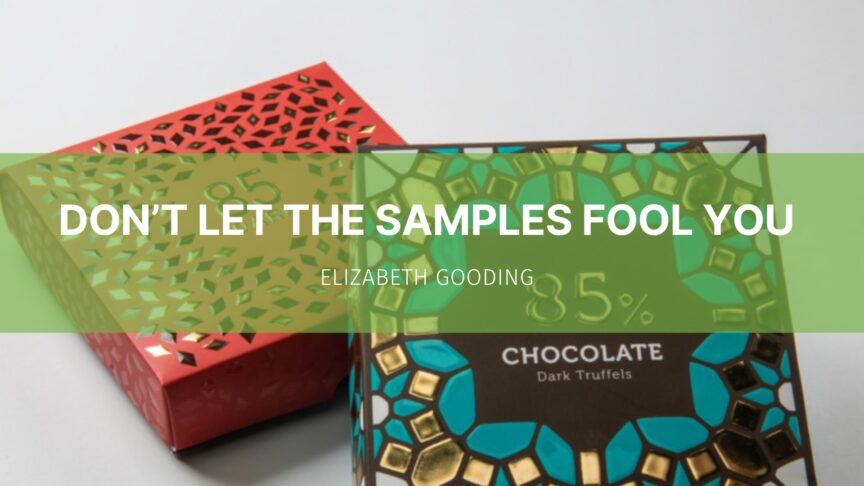If you attended drupa, you saw a lot of inkjet presses running and even more print samples available on the show floor from presses that didn’t make the trip overseas. There may not be quite as many presses at Printing United in Las Vegas but there will still be a lot of inkjet samples to check out.
As you walk through the aisles of flash and dazzle, some samples may immediately look better to you than others, but what exactly does “better” mean and are you making a fair comparison? Here’s how to make sure that your print quality evaluation is objective as it can be.
Understand critical inkjet differences!
With all other factors the same, an inkjet press will perform differently on different media. Particularly for water-based presses, the quality and finish of the paper, or other media, affect the final appearance and color quality. This is due to the way that the ink is absorbed into the substrate, the amount to which the dots spread on the surface, and the color and brightness of the paper showing through the ink. Resolution and ink limits may also vary based on the speed at which the press is run. Some devices may lower the speed on specific media, such as coated papers, to ensure proper drying.
When you look at the available samples, you want to also understand the options available with the press.
- The press may include an option to use a primer or pretreatment, was it used for all the samples? Can you see the performance difference with and without pretreatment?
- Does the sample indicate the speed setting use? Can you see the difference in performance at the top speed as compared to the top resolution if they differ?
- Does the sample reference the color profile or ink settings used for production? The amount of ink necessary to achieve a particular result, and the cost of the ink, is an important point of comparison.
It’s also important to understand that certain samples may be intended to demonstrate a machine’s capability to meet different needs; for example, run on coated stock or offset coated stock, or to run in a more economical ink-usage mode and still deliver “sellable” color. Not all samples, even from the same press or OEM are intended for direct comparison.
Don’t be dazzled by design
At every event, there are some companies who do an amazing job designing colorful, eye-catching print samples. It’s easy to be distracted by the beauty and creativity of the design and attribute that to the performance of the press. Samples may also take advantage of specialized finishing to push the limits on what is possible with their press and embellishment partners. Once a sample is coated or embellished, it disguises the underlying print quality.
Enjoy the show – review samples back home
Samples are an excellent way to build excitement about the capabilities of a particular press and about inkjet in general. However, it’s not possible to complete an objective assessment on-site. Ideally, you will want to request measurable print samples that demonstrate how the press handles different text sizes in positive and reverse, solids, fine line weights, halftones, and color fidelity. The sample design will require areas of low, medium and high coverage as well as vignettes. Asks for the paper type and settings used to run each sample and the date they were run.
Review under proper lighting conditions and take measurements such as optical density, chroma, small text clarity, edge clarity, and color gamut. Check the Knowledgebase for more on objective measurements of inkjet print quality and a free fingerprint sample you can download, search print quality on InkjetInsight.com.

